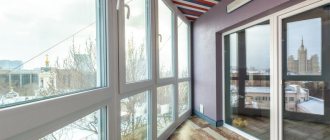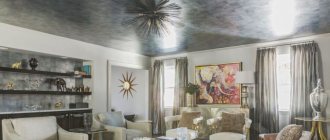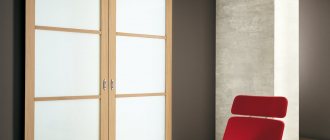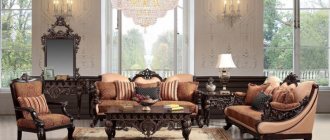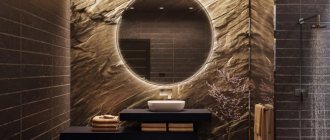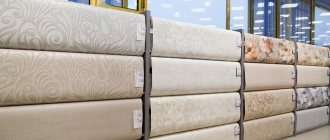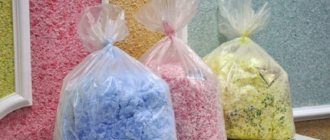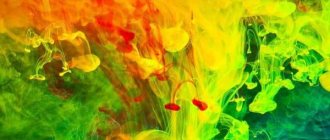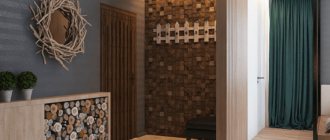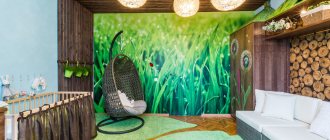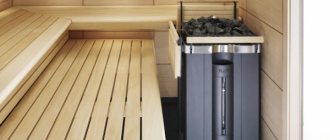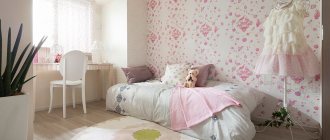general characteristics
What are the main pros and cons of wallpaper for painting? Decorating walls with wallpaper is the shortest way to obtain the final result with the least amount of time and nerves spent.
This is the advantage of wallpaper for painting over traditional painting work. Wallpaper does not require special preparation of the wall surface - it is enough to remove serious damage, and minor damage can be hidden under the canvas, especially under the textured one.
- High-quality coatings intended for painting have a base made of non-woven or fiberglass, which means that they additionally insulate and strengthen the wall.
- The material itself has a fairly long service life, which significantly increases the time until the next repair; moreover, high-quality finishing material - for example, non-woven wallpaper for painting - can be repainted up to 15 times without visible consequences.
- We are talking only about high-quality material, since simple, cheap, textured paper-based wallpaper completely loses its attractiveness after 3-4 repaintings.
So, the main advantages: Painting wallpaper allows you to give the surface a finished look in the shortest possible time, hide minor wall defects, improve sound insulation and increase the interval between repairs.
Many modern coatings intended for painting contain only natural ingredients - for example, bamboo, reed or even algae, which classifies them as environmentally friendly products.
When purchasing vinyl wallpaper for painting, you should make sure that there is a certificate of conformity - this will guarantee that no foreign odors will appear in the room during operation.
So, what kind of wallpaper can be painted in the interior?
Wallpaper based on paper is the simplest type. This is due to the fact that the structure includes only two main layers. They are easy to stick even on a surface that is not perfect.
Before applying paint, the wallpaper should be soaked in a solution that can repel moisture. It is important to know that the type in question can be used to decorate the ceiling.
Non-woven wallpaper has a higher density than the previously considered type. Strength is also excellent. It is worth paying attention to the fact that non-woven wallpaper does not wrinkle.
Experts recommend choosing this wallpaper in case of renovation in newly built houses. This is due to the fact that during the period of “shrinkage” of the walls, the wallpaper will not spread or tear.
More recently, wallpaper based on fiberglass has come into active use. As a rule, the type in question is used to create photo wallpaper. As for the cost, it is fully justified by the long, reliable service life.
RELEVANCE OF WALLPAPER WHEN FINISHING ROOMS FOR VARIOUS PURPOSE- Decorative brick wallpaper in the interior: types and design features (70+ photos)
How to choose armored doors
In addition, they can be used not only in residential premises, but also for other purposes.
You should not ignore the fact that any type of wallpaper can be pasted on your own for applying paint. At the same time, you will not need any skills in how to glue wallpaper for painting.
Paint selection
To ensure that the environmental component of the house is not compromised after renovation, it is worth purchasing adhesives and paints and varnishes that do not contain toxic chemical components.
Purchasing paint for wallpaper, like purchasing any things, is a responsible process, since the final result directly depends on the quality of the paint and varnish material. Acrylic, water-based or latex paints are considered the most suitable.
You can choose the desired shade or do the tinting yourself. By the way, now many building materials stores have equipment that allows you to mix colors without effort.
Material selection
Wallpaper for painting in the interior can be paper, non-woven or fiberglass. It is clear that each material has its own advantages and disadvantages. The most short-lived will be the paper-based coating, the other two have a decent service life and require better finishing results.
- Regardless of the base, all material intended for painting must be white, without any shades, and can be textured or smooth.
- It is worth purchasing smooth wallpaper for painting if the idea involves some kind of original work - say, creating a painting or pasting a ceiling - and textured surfaces are in no way suitable. In addition to their decorative function, smooth coatings cope well with minor mechanical damage.
- True, if necessary, you will have to purchase additional tools: textured rollers, stencils for printing ornaments, in general, some small things.
- Textured wallpaper also has its positive sides. Their biggest advantage over smooth coatings is that they imitate almost all existing finishing materials.
- There are also textured finishing materials on sale with various original, and therefore unusual, ornaments and patterns that are ideal for adherents of abstract art.
Most often, textured wallpaper is painted in a single color, and for placing any accents, combinations with smooth wallpaper or various color combinations are quite suitable.
There are plenty of examples in photos of wallpaper for painting on the Internet.
Types of textured wallpaper for painting
They are classified into the following types: non-woven, paper, vinyl and glass wallpaper. They differ from each other not only in external parameters, but also in technical indicators. The only general criterion is the possibility of repeated painting.
Below are each type with its advantages and disadvantages.
Non-woven
Non-woven textured wallpaper for painting is characterized by increased density. The product is resistant to stretching and contraction. When adding designs and patterns, foam vinyl is sprayed onto the canvas, which is very fragile without applying a layer of paint. Therefore, when choosing such a product, buy paint immediately.
The non-woven covering hides any small defect in the wall well. Due to their high density, they are recommended for gluing in new buildings, where there is a high chance of wall shrinkage. The durable structure of the non-woven fabric holds the crack that has formed and does not allow it to grow.
The only downside is the difficulty of gluing. Due to the heavy weight, one person is unlikely to cope with the gluing procedure.
Glass wallpaper
As the name suggests, it consists of special fiberglass strands (with the addition of sand, soda and quartz). This type is distinguished by the presence of brighter patterns and reliefs.
Thanks to the original color palette and dense structure, you can hide various flaws on the wall of the room. In addition, this type of product has the longest service life. Thanks to the fiber weaving technique, a high degree of wear resistance is achieved.
It is recommended to glue fiberglass wallpaper not only in a house or apartment, but also in work and public places.
The disadvantage of the material is that it is difficult to remove them. Even after the expiration date, you need to put a lot of effort into removing the linen.
Paper
They are distinguished by their versatility. The coating is suitable for any room and interior, and its technical and decorative characteristics make it possible to hide small-scale wall irregularities. When gluing, you don’t even need a perfectly flat surface.
Paper textured wallpaper consists of 2 layers, so they are thick and dense. The material is treated with a special hydrophobic solution that increases resistance to moisture. Therefore, repainting up to 5-7 times will not harm the coating in any way.
A special feature of textured paper products is their gluing on the ceiling. The view is incomparable.
The disadvantage of the material is considered to be a shorter service life, unlike its “brothers” - up to 7 years.
Vinyl
They differ from non-woven ones only in their porous surface, which has a fragile structure that can easily be torn off or scratched. However, this drawback can be overcome by painting. After painting, strength indicators increase significantly.
In all other technical parameters, vinyl ones are similar to non-woven ones.
Nuances of work
It is worth following the instructions on how to paint wallpaper. Before applying the coating intended for painting, it is necessary to prepare the wall surface.
The advantage of this finishing material is that no special processing is required:
- It is enough to simply correct gross defects in the plaster and apply a layer of primer to it.
- If you use liquid wallpaper, this procedure is greatly simplified.
- It is advisable to apply the adhesive composition to the wall - this way the wallpaper will dry faster, and the glue consumption will also be significantly reduced.
- You should use paint designed specifically for this type of material, as it practically does not clog the texture.
- This will allow you to simply wash and repaint the wall if necessary. You can apply paint in any way. But many people prefer to do it with a roller.
The coating for painting is applied using the same technology as in the case of conventional wallpaper: The air is also expelled from under the pasted canvas with a roller; in the same way, windows and doors in the room should not be opened until the coating has completely dried.
And finally, one very wise piece of advice:
- When decorating a children's room, this type of finishing material can greatly facilitate the final stage of finishing.
- It is enough to paste the wallpaper on the wall and then give the paint to the children - exclusivity is one hundred percent guaranteed.
True, then the painters and the floor will have to be scrubbed of paint, but this is not a problem either: It is enough to cover the floors with film, and dress the children in professional painter suits.
But there will be no limit to delight and joy - you just have to remember Tom Sawyer.
Which wallpaper to paint?
It is worth noting that not every type of wallpaper has a coloring function. Standard wallpaper may begin to deform from exposure to paint. That is why it is worth choosing specialized types. Today there are three main types. Each of them is usually done in neutral, white colors.
The production of wallpaper for applying paint uses specialized materials.
It is important to pay attention to the fact that each type is produced using certain technologies, which allows you to create models that will be endowed with a variety of properties.
Note! Red wallpaper - bright accents in a modern interior (99 photos)
It follows that each of the types of wallpaper presented below has an individual level of density, and accordingly the cost will also be varied.
